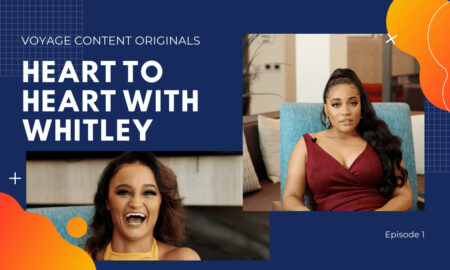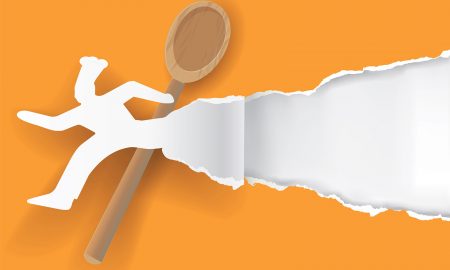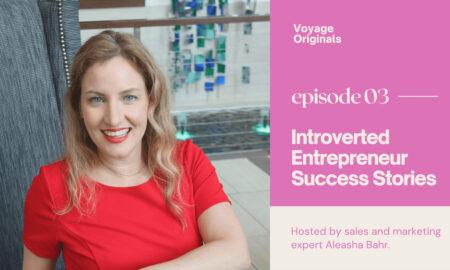

Today we’d like to introduce you to Meagan Fikes.
Hi Meagan, we’d love for you to start by introducing yourself.
I originally pursued a career as an actuary. I had a passion for all things math related, a knack for learning new topics outside of a classroom setting, and preferred to sit and focus at a desk rather than do the hands-on type of work. It seemed like the perfect fit for me.
I graduated with a degree in actuarial science and immediately set out into my career that lasted ten years. At some point along the way, I realized I had made a mistake. Not a mistake I regret — it was arguably a necessary mistake that helped me to get to where I am today. But in the moment, when I realized I was in the wrong career, it felt like a huge mistake that would take more effort than I was capable of to reverse.
In 2012, I was diagnosed with a severe gluten intolerance as well as a couple of food allergies. I had a passion for cooking but had to re-learn how to do it with a new set of ingredients. I turned to the internet and was introduced to food blogs. There were seemingly endless recipes that I could safely eat and I thoroughly enjoyed following along with the bloggers’ stories. Naturally, as I created my own recipes, I wanted to share them online to help anybody who might need them.
Now, if you’ve ever met a food blogger, you know they take on the work of an entire team on their own — recipe developer, photographer, videographer, writer, marketer, ebook author, and tech support. Give or take a few responsibilities depending on what activities they choose to take on and if their websites are monetized with enough profit to hire out any of those roles. The role I enjoyed the most (other than taste tester of course) was working on the website itself.
I dug in deep. I signed up for so many classes, read books, and spent countless hours online reading free resources and experimenting with what I learned. I scrapped plenty of hard work and replaced it with content that followed best practices. I became nearly paralyzed with fear learning about navigating the world of privacy and accessibility laws. But I was hooked.
Soon, my little blog and practice websites weren’t enough. I started pursuing real-world web design work in my spare time for fun. I had given up on completing the actuarial exams and well, that frees up quite a bit of extra time! (Although, I probably should have used some of that time to get an extra hour or two of sleep.)
I started doing contract work for a more established web designer and got to see the inner workings of a successful business up close and personal. It was an opportunity that I only wish every entrepreneur could experience for themselves.
Eventually, the web designer I was working for decided it was time to close up shop and move on to other interests. I had already established my LLC and I decided to purchase her business and bring it under my own. The clients experienced a seamless transition as we had already gotten to know each other. I wrapped up all loose ends on the in-progress work and continued bringing in my own projects. It was time for my new career.
I have to acknowledge, I was in the right place at the right time and I am so grateful for the opportunity to purchase a business and skip ahead what likely would have been a few years worth of work. Years ago, before I could see any realistic way of leaving the actuarial field, I loved reading stories of how other people achieved their career changes or launched businesses. It was inspiring. And I remember the frustration of hearing seemingly everyone’s lucky breaks knowing I could never replicate luck. But I really did get a lucky break. I worked incredibly hard too but that lucky break really helped push me forward.
Would you say it’s been a smooth road, and if not what are some of the biggest challenges you’ve faced along the way?
It hasn’t been easy and I never expected it to be. I still have not developed my business to the point where I am fully satisfied with it and I recognize that I never will be. And I think that’s for the better.
Most business owners can probably relate when I say my biggest struggle, which I’m still dealing with, is finding sufficient time for the business. I occasionally need to meet with clients over video calls during business hours but the majority of my work is done between midnight and 3 am. I may not have to report to the corporate world for eight hours a day anymore but my daytime schedule is full as I’ve decided to homeschool both of my kids and their education comes first. I do get some time here and there to do daytime work but the really good, uninterrupted flow state type of work happens late at night. When my daughter was a newborn, sometimes I could only put in five or ten minutes here and there but everything really does add up. I’m fortunate I am able to jump right back into my work without needing to get “settled in” and having to figure out where I left off but that’s definitely NOT a skill I’ve always had!
The goal is to get to a point where I can hire employees. I may be stating the obvious here but I only have a set amount of time to give to the business. If somebody else puts in the same amount of time as myself, I can double the work put into it. More help means we are growing the business at a faster rate and can take on more work. I can’t do it all on my own forever and I don’t intend to. I want to grow my business into something that’s bigger than just myself.
There have been many other challenges aside from just lack of time and I always remind myself that most things we encounter in life are temporary. It might be easier to throw our hands up in defeat and give in to circumstance whether that circumstance is a recession, an illness, a reduction in clients, a professional mistake, a change in personal responsibilities, or whatever else we might run into. But if we have the means to hold out and work through it, things have the potential to go back to the way they were or even better. It never feels good to contemplate shutting down a hard-earned business but considering whether or not things will change in the future might be helpful in guiding those hard decisions.
We’ve been impressed with Slipstream Web Design, but for folks who might not be as familiar, what can you share with them about what you do and what sets you apart from others?
I design and build fully custom websites but I don’t just want to make something pretty — I want to problem solve.
A good website isn’t meant to be a heavily designed, overpriced business flyer. It should work hard by genuinely benefitting both the business and the website visitors.
Each website kicks off with an industry research phase. I take time to learn about the client’s industry so I can better understand their unique needs. I also check out the competition to see if there are any industry-specific trends or problems not being solved and areas we can do better in. For example, while researching for a daycare website, I found parents online complaining that whenever they took the time to inquire with a daycare, there were no openings. So for the new daycare website, I implemented a waitlist form and a banner at the top of the site notifying visitors of whether there were currently openings or if they needed to sign up on the waitlist.
After industry research, I begin a process I call customer journey mapping. I want to understand what steps an ideal customer will take to go from hearing about the business to arriving on the website to becoming a paying customer. A huge part of this is anticipating the potential customer’s needs and determining where those needs align with the goals of the business. From there, I implement supporting design elements, call to action placements, and functionality in order to best direct the flow of visitors on the website.
The website itself is truly custom. This is probably the most misunderstood aspect of my business. I’m not taking predesigned themes or templates and adding in the client’s business information and branding to personalize it. Each site is designed from scratch to be a perfect fit for the unique business it will represent. Unlike predesigned themes that are sold over and over again, nobody else will share the same design. There’s also nothing extra or unnecessary on the website. I only add what is needed for a lightweight, fast website.
At the conclusion of each website build, every client receives thirty days of complimentary website maintenance and support. I record any how-to videos they may need, offer guidance, back up the website, perform necessary updates, and even include an hour of task time to use however they see fit. I’ve chosen to include this service as complimentary for the first thirty days because learning to use and interact with a new website can come with some learning curves. I believe post-launch support shouldn’t be an optional add-on but instead is a necessary service that all clients deserve. For those that would rather not do their own website maintenance, I also offer ongoing maintenance plans.
Risk taking is a topic that people have widely differing views on – we’d love to hear your thoughts.
I have an admiration for people who can take big risks that end up paying off. But that’s not me. I’m not a risk taker and fall flat on my face under that level of pressure.
I’ve always been the type of person to carefully plan and review all of my options. To make sure that safety net is secured in place. That being said, I know I have to take some risks that make me uncomfortable or that I can’t predict the outcome on. However, if I’m going to figure out what works and what my business needs, I have to take risks and put my ideas to the test.
I’m currently developing out another area of my services and I don’t know how it’s going to be perceived or if it will sell. I tried it out with one client and it went over really well but one sale is far from a large enough sample size to draw any conclusions. I really won’t know more if I don’t put the idea out into the world so yes, it is risky to spend so much of my time working on this for it to potentially flop. To better align with my risk-averse nature, my next step is a mini launch. It might go really well or it might be a disaster but the results will help me determine whether I move on to a full launch, revise my idea, or scrap the idea completely.
Contact Info:
- Website: https://slipstreamwebdesign.com/
- Instagram: https://www.instagram.com/slipstreamwebdesign/
- Other: https://slipstreamwebdesign.com/20-tools-small-business-websites/

















